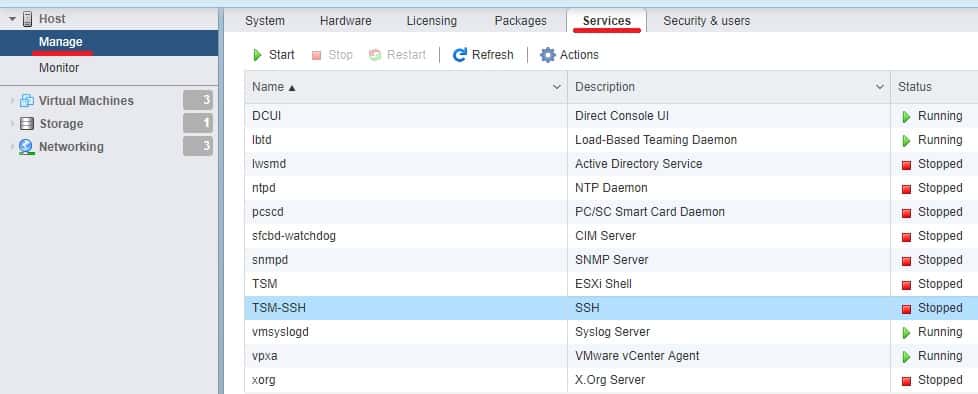


Once you’re enabled the Remote Tech Support feature you will receive a message within the vSphere Client (both if your directly connected to a ESXi host or through the vCenter Server) indicating that Remote Tech Support Mode is enabled. To test if it’s working, you can use Putty to connect to the ESXi host. I recommend you to always set this time out on production systems, because you can’t forget to turn if off again.Įnter any value between 0 (zero) and (one day) 1440 minutes (where zero is to disable it, and 1440 is the maximum) to enable the SSH time out, press Enter to activate it. To enable a timeout on which the SSH service is turned on, select Modify Tech Support Timeout, and hit Enter to continue, this option is not required, it can be useful to provide someone access to the ESXi host for just a few minutes/hours.

Sometimes it can be hard to enable it through the DCUI especially when using iLO, but maybe that’s because I’m not patient enough :-). Īfter a few second Remote Tech Support should be enabled, if not press the Enter key one more time until you see a screen as shown above. Select Enable Remote Tech Support (SSH) to enable the SSH service, be patient because it will take some time to enable it, if you press Enter twice you will disable Remote Tech Support. You will find the Remote Tech Support option under the Troubleshooting Options. Once you have direct console access to the DCUI of the ESXi server you’re able to enable Remote Tech Support (SSH) on the ESXi host, but first you need to login with the right credentials, in most cases this will be the root account. If you’re running vSphere 4.1 you can also enable this via the vSphere Client, see option two for more details. One small drawback is that you need to have either a physical console access or a iLO, DRAC or some other remote console access. Main use of the individual user account simplifies the auditing of the local logins and task performed by user.Option 1: enable Remote Tech Support (SSH) via the DCUIĮnabling Remote Tech Support (SSH) is ideal production systems, because you can enable it and leave it turned on for an x amount of time, and after the time out SSH is being disabled automatically, so the system is secure again. With previous versions of ESXi host, You need to use su to execute the commands in ESXi shell but with vSphere 5.1, you can execute all permissions with the use of locally created user account with Administrative permission automatically get ssh and local DCUI access. This eliminates the need of root account usage. Just add the locally created user account of ESXi host to DCUI privileges or admin access. With vSphere 5.1, You can login to DCUI without need of root privileges. You need to login to ESXi shell using root account.Only root account can able to login to access physical console access of the ESXi host using DCUI. Root account access is needed, when Lockdown mode is enabled. But with the release of ESXi 5.1, There is no need to use root account to manage the ESXi host. With the Previous Version of ESXi, you need to use root account to manage the ESXi host. As of vSphere 5.0, VMware Announced only the release of ESXi will be available and there won’t be an ESX servers.With the release of vSphere 5.1, VMware introduced an added security enhancements for high security standards with access and auditing.

Diff VCenter 5.5 appliance and vCenter on WIndowsĪs compared to ESX, ESXi is released to add more security to the hypervisor.


 0 kommentar(er)
0 kommentar(er)
